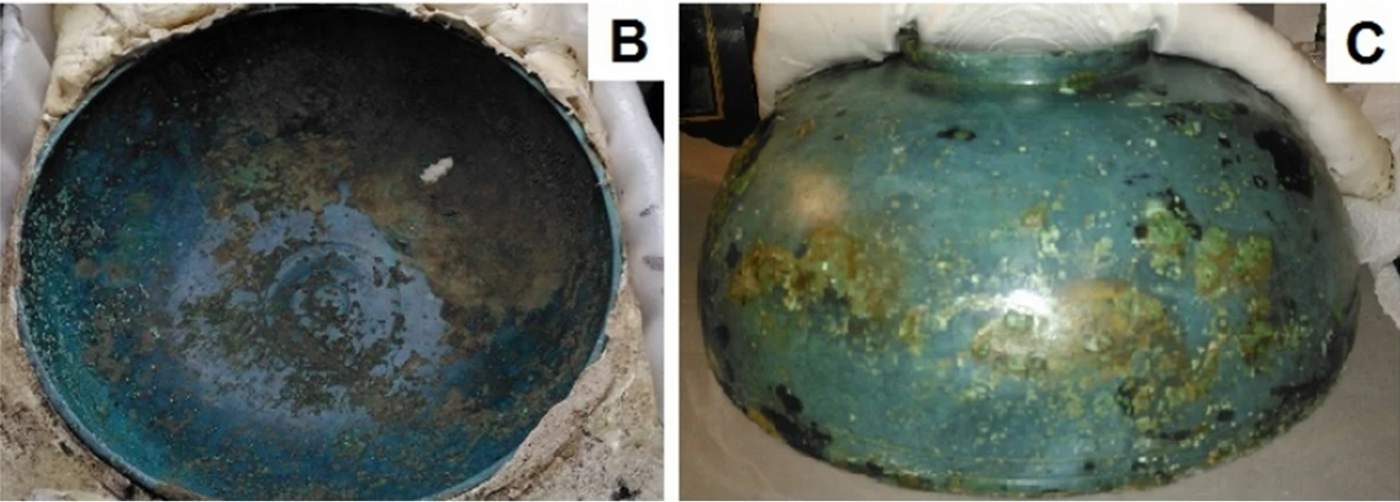Modern Pesticides Found in Archaeological Materials
It may or may not come as a surprise to some, but a lot of archaeological finds are found, well…underground. Quite literally beneath the surface that we are actively living, working, and engaging in our daily antics on. Archaeologists are well aware that the things happening on the modern surface can impact historic and prehistoric materials buried at varying depths. Agricultural practices and construction are big ones that can physically disrupt archaeological strata (layers), features (structures & the like), and artifacts.
However, a new study confirms that it’s not only direct, physical, disruption that can affect archaeological materials underground, but chemicals from modern activities that can leech into the soil and cause damage over time.
A study published in Scientific Reports at the beginning of October describes the identification of modern pesticides on a 1st-4th century copper Roman bowl that was excavated in the United Kingdom.

The bowl was excavated on a farm in Kent and, while noted as being in overall good condition, had areas of discoloration and corrosion that were sampled for chemical analysis. Three methods of analysis were used: XRD – X-ray Powder Diffraction, FTIR - Fourier Transform Infrared, and GC-QTOF-MS - Gas Chromatography with quadrupole time-of-flight mass spectrometry. Each of these tests were carried out to identify mineral phases, chemical fingerprints, and organic molecules respectively.
While the tests confirmed some elements associated with normal copper corrosion, the GC-QTOF-MS results indicated the presence of chlorobenzenes. Chlorobenzenes are synthetic compounds that, among other things, were used in agriculture as a component of herbicides and pesticides. HCB, a type of chlorobenzene used in agriculture, is now restricted in many countries due to its toxicity and known harm to people. Additionally, the team found traces of diethyltoluamide, AKA DEET, a common component of insect-repellant on other discolored areas of the bowl.
Although chlorobenzenes are no longer used in the UK, and as mentioned above are restricted elsewhere, the authors conclude that soil pollution is an ongoing threat to archaeological materials that remain underground.
*Featured cover image: Copper bowl on display at the Sandwich Museum, UK. Image adapted from Carvalho, L.d., Goodburn-Brown, D., McCullagh, J.S.O. et al. 2022 and shared under Creative Commons Attribution 4.0 International License (image has been cropped).
Sources: Scientific Reports, Science Direct (1), (2), Comprehensive Analytical Chemistry, National Library of Medicine (1), (2), EurekaAlert!








